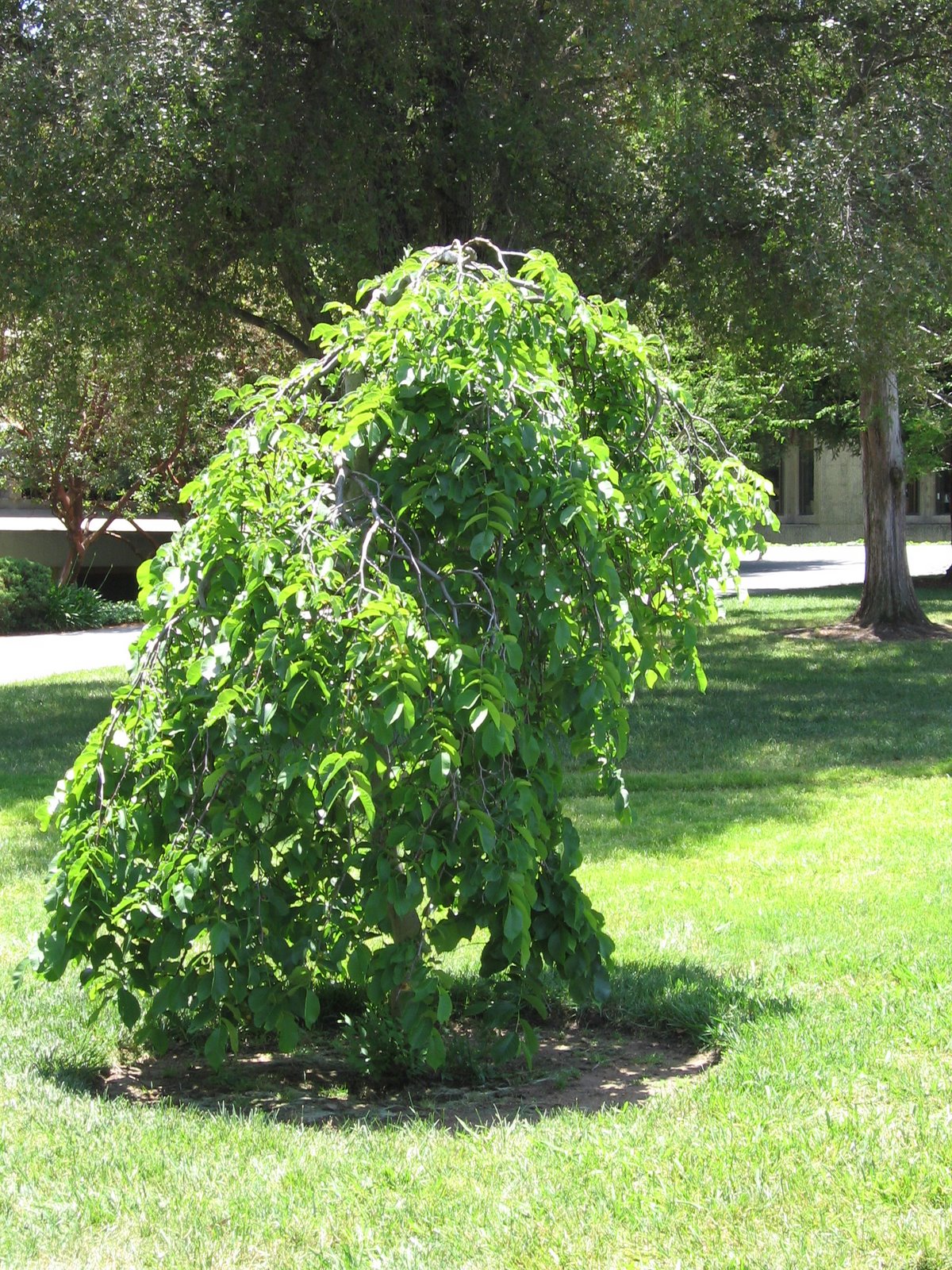Ulmus glabra
 wych elm
wych elm
Wych elm, sometimes known as Scotch elm, is distinguished from English elm by having shorter leaf-stalks and larger fruits. The seed is situated in the center of the wing and there is a notch that does not reach the seed. The leaves are asymmetrical at the base, rough to the touch on top, and may have three points.
It is not a common tree now in these parts, but an avenue of wych elms was planted on Museum Way in 1891. Two unimpressive specimens in the northeast corner of Roth Way and Palm Drive were removed October 2004; the larger of the two appeared to be an old tree about 25 feet tall, situated 21 yards north of Roth Way and 55 yards to Palm Drive sidewalk. Two other individuals noted, one on Lasuen Street between Roth Way and Museum Way, and one on Lasuen Street (perhaps a survivor of the avenue on Museum Way) were not found in 2018.
A 6 foot tall specimen of the variety ‘Camperdownii’ was planted in February 2003 in the Canfield Court lawn near Meyer Library (now Meyer Green). It had weeping limbs that reached to the ground. It was removed June 2008, suffering from sunscald, scales, root rot, and too much water. At Filoli in Woodside, Camperdown elms south of the swimming pool pavilion form a dense, high canopy. The original tree appeared as a sport of U. glabra in 1850 at Camperdown House near Dundee, Scotland.
Name derivation: Ulmus – classical Latin name for the elm.
About this Entry: The main text of this entry is from the book Trees of Stanford and Environs, by Ronald Bracewell, published 2005. John Rawlings noted the removal of the Canfield ‘Camperdownii’ and the Roth/Palm Drive pair. Sairus Patel noted the absence of the other two survivors on Lasuen; all locations verified Dec 2018.




